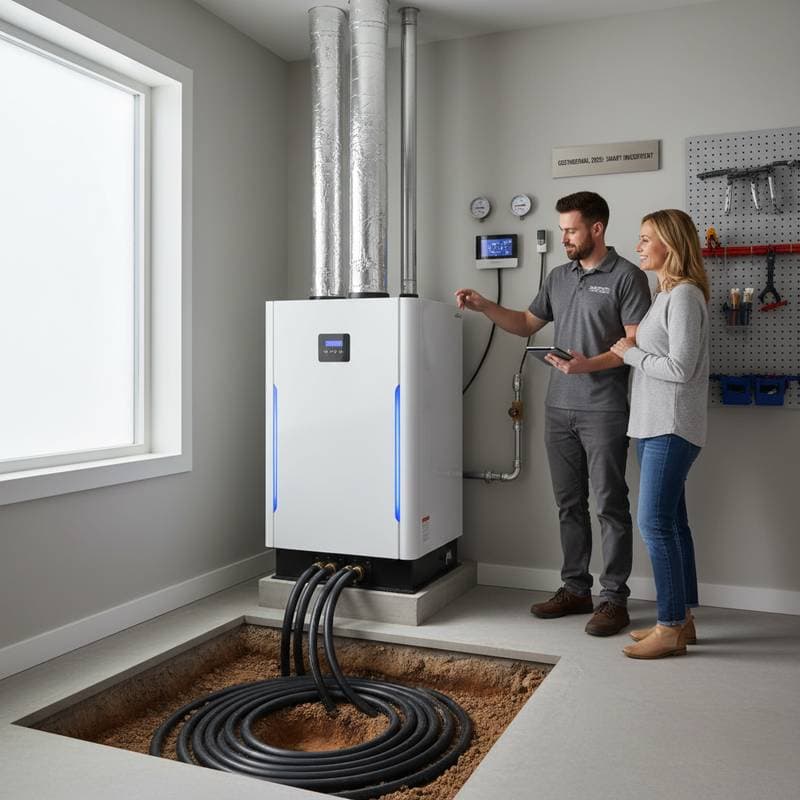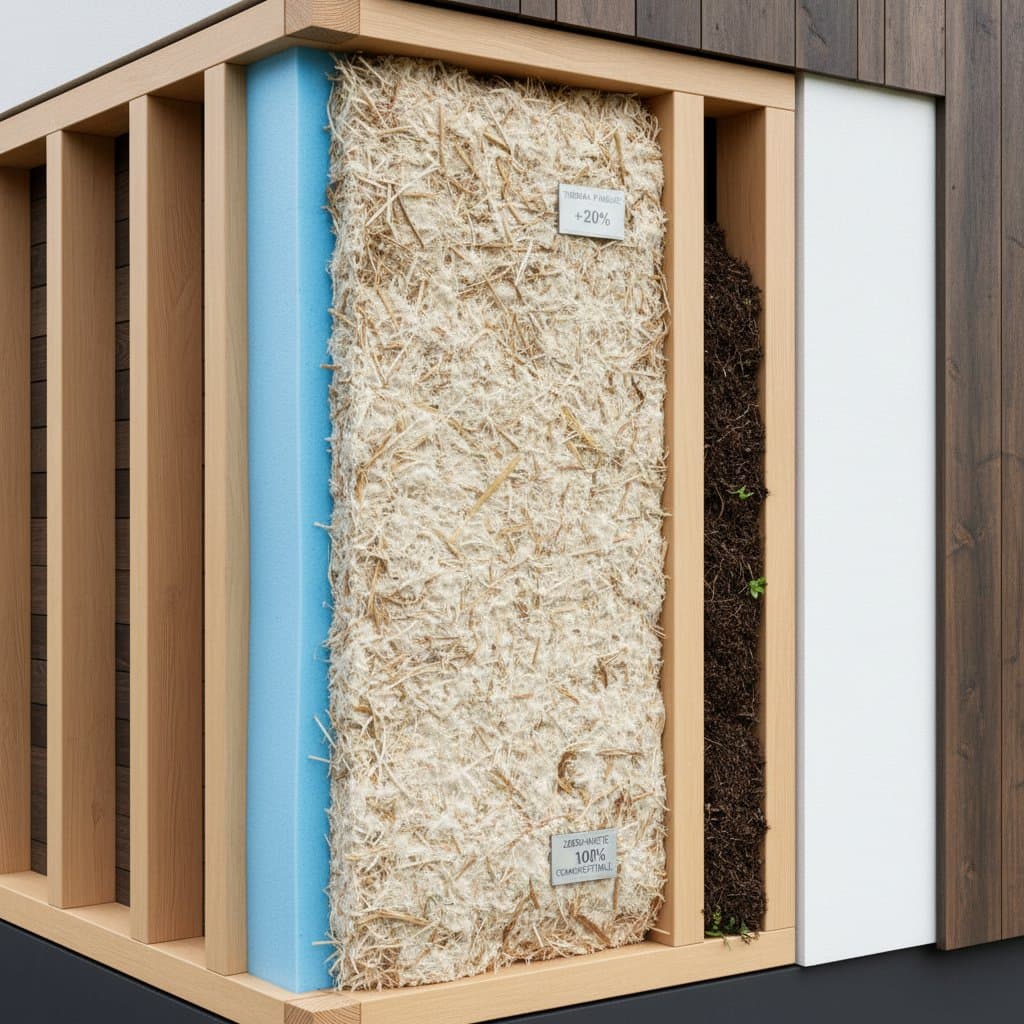Key Benefits of Hempcrete
- Hempcrete delivers carbon-negative insulation by sequestering carbon during hemp growth and continuing absorption through its lifecycle.
- Walls constructed with hempcrete endure for decades, requiring little maintenance when properly installed.
- It lowers heating and cooling demands by up to 50 percent relative to conventional insulation methods.
- Although upfront expenses exceed traditional options by 5 to 15 percent, energy savings recoup costs within 10 years.
- The material resists pests naturally, remains non-toxic, and maintains stable indoor temperatures and moisture levels.
The Importance of Hempcrete in Contemporary Housing
Hempcrete stands out for its dual environmental and economic advantages in home construction. The hemp plant absorbs carbon dioxide as it grows quickly on minimal water and without pesticides, enriching the soil in the process. Once mixed with lime binder, the material hardens by drawing additional carbon from the atmosphere, creating walls that actively reduce global carbon levels while insulating effectively.
On the financial side, hempcrete installations may increase initial budgets by 5 to 15 percent over standard builds. However, its thermal mass and vapor permeability keep indoor climates steady, often dropping utility bills by 30 to 50 percent. Over time, reduced upkeep, superior air quality, and extended material life enhance property appeal to environmentally aware buyers, boosting potential resale prices.
Practical Approaches to Hempcrete Construction
Building with hempcrete demands skilled labor that combines time-honored techniques with current knowledge. Options include casting the mixture on-site, applying it via spray, or using factory-made panels, each suited to specific project scales and financial plans.
Cast-in-place methods work well for bespoke residences, allowing precise control over wall dimensions. Workers mix hemp hurds with lime and water, then pack the blend into temporary molds around a load-bearing frame like timber or steel. This approach ensures seamless integration but requires careful monitoring during the multi-week carbonation curing phase.
Spray application accelerates the process for expansive residential or commercial sites. Specialized machinery propels the wet mix onto frames, building thickness layer by layer for uniform coverage. Prefabricated panels, cured off-site, simplify assembly on location, though planners must account for shipping fees and crane access.
Curing occurs through carbonation rather than evaporation, as the lime reacts with airborne carbon dioxide to form stable calcium carbonate. This gentle hardening yields a permeable, resilient structure that breathes and stores carbon indefinitely.
Sustainability and Wellness Benefits
Hempcrete's eco-profile starts with its source material. Industrial hemp matures in 3 to 4 months, demands 50 percent less water than cotton, and improves soil fertility without chemical inputs. Each ton of hemp sequesters about 1.5 tons of carbon dioxide during cultivation, far surpassing many crops.
The finished product amplifies this impact. As lime cures, it absorbs roughly 0.1 kilograms of carbon dioxide per kilogram of binder, rendering the entire system carbon negative over its lifespan. Unlike energy-intensive materials like concrete, hempcrete production emits minimal greenhouse gases.
Health benefits arise from its inert composition. Free of volatile organic compounds, it prevents off-gassing and supports allergy sufferers. The walls buffer humidity between 40 and 70 percent, inhibiting mold growth and fostering cleaner air circulation for better respiratory health.
Insights from Construction Professionals
Builders familiar with hempcrete praise its adaptability during application and reliability once set. The mixture molds easily around frames, forgiving minor errors, yet cures into a robust barrier that outperforms rigid insulations in real-world conditions.
Architects value its compatibility with diverse framing systems, from wood studs to metal skeletons. Pair it with breathable finishes such as limewash or silicate paints to preserve moisture flow. Engineers highlight its Class 0 fire rating in European standards, where it chars slowly without igniting, and its low conductivity value of 0.06 to 0.12 W/mK for efficient heat retention.
Success hinges on meticulous planning. Use hempcrete for non-load-bearing infill only, reinforcing junctions with breathable membranes. Optimal curing in shaded, ventilated spaces at 10 to 20 degrees Celsius minimizes cracks and maximizes carbon uptake.
Hempcrete Versus Alternative Sustainable Insulations
When selecting green insulation, hempcrete competes with options like recycled cellulose, cork granules, and wood fiber boards. Each alternative provides renewable qualities, but hempcrete excels in multifaceted performance.
Cellulose, blown into cavities, costs less and recycles paper waste effectively, yet it compresses over years and offers less thermal mass. Cork delivers strong acoustic damping and elasticity but faces sourcing constraints from limited cork oak forests, driving up prices.
Wood fiber insulates reliably with low embodied energy and sequesters some carbon, though not as aggressively as hemp. Its rigid panels suit dry climates but may absorb excess moisture without proper barriers.
Hempcrete integrates insulation, density for heat storage, and ongoing carbon capture in one versatile form. Its open-cell structure allows vapor diffusion, reducing condensation risks, while inherent fire and pest resistance add layers of safety absent in many peers.
Steps to Incorporate Hempcrete in Your Build
Prospective builders should seek certified professionals through networks like the Hemp Building Association. Review portfolios of completed homes to gauge real energy performance, such as documented 40 percent reductions in annual heating loads.
Develop a detailed budget that includes 20 to 30 percent extra for specialized tools and labor. In cold climates, aim for 300 to 400 millimeters of wall thickness to achieve R-values above 20. Check local rebates for low-carbon materials, which can cover up to 10 percent of costs in regions like the European Union or select U.S. states.
Interior design choices amplify benefits. Apply lime plasters in 10 to 15 millimeter layers for seamless adhesion and humidity control. Select earth-based or mineral paints to avoid blocking the walls' natural regulation, ensuring the home remains dry and comfortable year-round.
Realizing Lasting Value Through Hempcrete
Choosing hempcrete elevates a structure into an efficient, regenerative asset. It aligns daily living with planetary health, delivering measurable savings and serenity. Homeowners gain not just lower bills, but a resilient space that nurtures well-being for generations.







